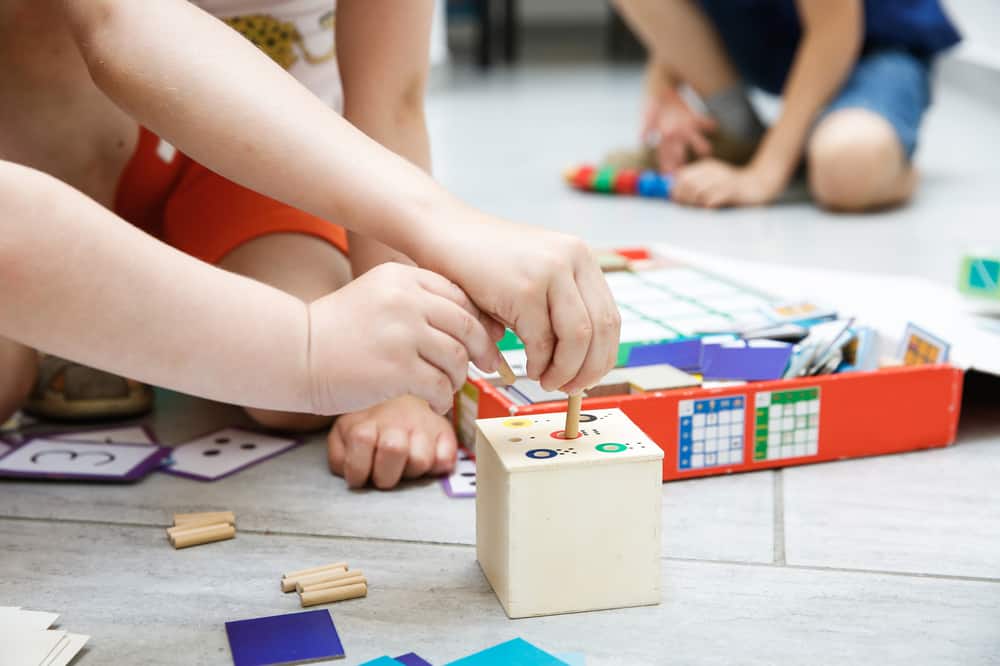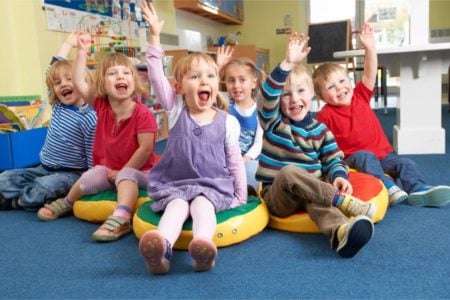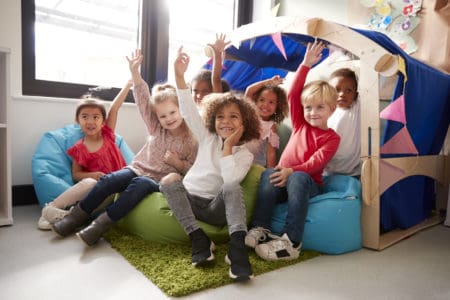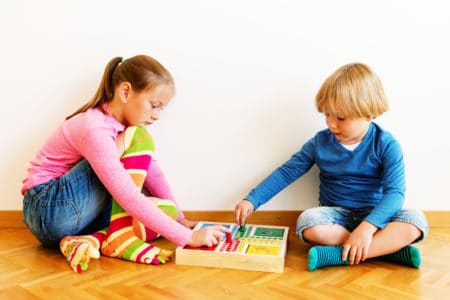Deciding to enroll your child in preschool is a massive milestone. It is often the first time parents face the pressure of educational choices, and everyone seems to have an opinion.
There is no single “right” answer. Whether you choose a formal program or keep your little one home a bit longer, your decision comes from a place of love.
Finding the right spot is tricky. You want a place that prioritizes play, safety, and emotional growth over rigid academics. You want your child to love learning, not dread the drop-off.
In this guide, we break down everything you need to know to make the best choice for your family.
Do Kids Need Preschool?
The time between birth and age eight is arguably the most critical period in a human’s life. During these formative years, your child’s experiences shape their brain architecture, language skills, and ability to socialize (1).
Early experiences also dictate how kids respond to stress. Exposing your child to learning opportunities before age five can give them a distinct advantage later in life (2).
Preschool offers a structured environment for your child to learn through play, receive positive guidance, and build their first friendships.
Enrollment Is Rising
Parents are increasingly seeing the value of early education. According to the National Center for Education Statistics, the enrollment of 3- to 5-year-olds in preschool programs has risen significantly over the last two decades, with over 56 percent of children participating as of 2017 (3).
However, statistics do not tell the whole story. There are valid reasons why a parent might opt out.
Cost is a major factor. Private preschools can be expensive, and for families watching their budget, it often takes a backseat to other necessities.
Others worry about “institutionalizing” children too early. They fear modern curriculums are too focused on academics rather than letting kids be kids. They worry their child might memorize the alphabet but lose their creative spark.
While some schools are overly academic, many prioritize play-based learning. This is where your research is vital.
Quick Tip
For many, preschool is the bridge between toddlerhood and being a successful, confident student.
Benefits of Preschool

Children are like sponges. They soak up information constantly. In preschool, they are not just learning colors or numbers; they are stepping into a world that fosters social and emotional growth.
Here are the top benefits of enrolling your child.
1. Mastering Social Interaction
We have all seen the toddler who grabs a toy and screams. Without guidance, this impulse control takes longer to develop.
Preschool teaches kids how to share, cooperate, and take turns. They engage in group activities designed specifically to build these interpersonal skills (4).
While playdates are great, a classroom setting teaches social interaction with a wider variety of peers under professional guidance.
2. Exposure to Diversity
In our multicultural world, understanding differences is a vital life skill. As children grow, they notice that not everyone looks, speaks, or acts like their family.
Preschool introduces kids to peers and adults from different backgrounds. This consistent interaction teaches them to accept and appreciate differences naturally. It plants the seeds of tolerance and empathy early on.
3. Responsibility and Self-Sufficiency
Preschoolers learn to take care of their belongings and respect classroom materials. Teachers reinforce the lessons you teach at home about cleaning up.
In Montessori programs specifically, self-care is a core pillar. Kids learn to brush their teeth, use the restroom independently, and dress themselves.
4. Following Directions From Other Adults
Learning to listen to authority figures other than mom and dad is a major milestone. Preschool shows children that rules exist outside the home and must be respected.
They also learn cause and effect. Following instructions leads to positive outcomes, while ignoring them has consequences. This prepares them for the structure of kindergarten.
5. Teamwork and Collaboration
Many activities require teamwork. Kids pair up to solve problems or create something new.
These sessions teach them to exchange ideas, listen to others, and work toward a shared goal. This fosters a sense of belonging and boosts self-confidence (5).
6. Keeping Kids Active
It is tempting to let kids zone out in front of the TV, but the American Academy of Pediatrics recommends limiting screen time for young children to just one hour a day (6).
Preschool gets kids moving. Between playground time, dance circles, and active learning, they burn off energy and stay healthy.
7. Learning Manners
Preschool helps nip rude habits in the bud. The structured setting instills politeness, such as waiting in line, saying “please,” and raising a hand to speak.
Children also see how bad manners affect others. When a peer is rude, they realize they do not want to make others feel that way.
8. Instilling a Love for Learning
Great preschools make learning feel like a game. Kids explore new concepts through songs, stories, and experiments. This feeds their natural curiosity.
Research indicates that children who attend quality preschools are more likely to graduate high school later in life (7).
9. Concentration and Imagination
Sitting still is hard for toddlers. The classroom setting helps stretch their attention span gradually.
Activities like creative arts and dramatic play build imagination. Kids learn to focus on a task for longer periods, a skill they will need for the rest of their academic career.
10. Fine Motor Skills
Simple activities like pasting, stacking blocks, and holding crayons are actually rigorous training for small hands.
Drawing and coloring improve hand-eye coordination. As they get better at buttoning coats or tying shoes, they gain independence (8).
Types of Preschools

If you are new to this, the terminology can be overwhelming. Broadly, schools fall into two camps: play-based (child-centered) or academic.
In child-centered schools, kids learn through exploration with teachers acting as guides. The child often takes the lead.
Academic models are more teacher-directed. Children follow specific instructions, and learning is often measured by milestones or preparation for testing (9).
Both prepare kids for kindergarten, but the methods differ. Here is a breakdown of the most common philosophies.
1. Montessori
Developed by Maria Montessori, this popular model focuses on the whole child. Teachers guide students who learn at their own pace using specific “work” materials.
The focus is on independence, hands-on learning, and practical life skills. You will often see mixed-age classrooms where older kids help younger ones (10).
2. Waldorf
Waldorf education emphasizes imagination and the natural world. It relies heavily on predictable routines, creative play, and arts like music and painting.
You will not find screens, electronics, or plastic toys here. The environment is usually very home-like and warm.
3. Reggio Emilia
This approach treats children as capable citizens. Learning is project-based and documented through photos and videos.
If the class is interested in bugs, the curriculum shifts to focus on bugs for weeks. It is highly collaborative and views the classroom environment as the “third teacher.”
4. HighScope
Common in community programs, HighScope is more academic and research-based. It uses a “plan-do-review” sequence where children plan their activities, execute them, and then discuss what they learned. It covers reading, math, and science concepts explicitly.
5. Play-Based
This is a general term for schools that believe play is the work of childhood. They may borrow elements from Waldorf or Montessori. The day consists of unstructured play, circle time, and themed activities (11).
6. Parent Co-operative
A co-op is perfect for parents who want to be hands-on. Parents help run the school, acting as aides in the classroom or handling administrative tasks.
This model is usually the most affordable option, but it requires a significant time commitment.
Know the Lingo
You will hear these terms tossed around during tours. Here is what they mean:
- Teacher-led: Students follow a schedule created strictly by the teacher.
- Child-centered: Classroom activities are determined by the children’s current interests.
- Child-led: Teachers wait for the child to initiate learning.
- Cooperative: Parents work alongside teachers to run the school.
- Faith-based: Programs run by religious organizations that incorporate spiritual teachings.
- Developmentally appropriate: Activities match the child’s age and cognitive ability, rather than forcing advanced concepts too early.
- Pre-K: Usually refers to the specific year before kindergarten, often with a more structured approach than general preschool.
How Much Do Preschools Cost?
Costs vary wildly depending on your location and the type of school. On average, private preschools can range from $4,000 to over $13,000 per year (12). In major metropolitan areas, high-end programs can easily exceed $20,000 annually.
Beyond tuition, watch out for hidden fees:
- Application fees: $50 to $100 annually.
- Materials: Books and supplies can add $200 to $500.
- Food: School lunches may cost an extra $30 to $100 per month.
- Extras: Field trips and fundraisers typically run $50 to $300.
Co-ops are generally cheaper ($250 to $1,000/month) but cost you time.
For low-income families, the federal Head Start program provides free early education. Some families earning above the poverty line may still qualify depending on circumstances (13).
How to Choose a Good Preschool

A “good” preschool is simply the one that fits your child and your life. Here is how to find it.
1. Start Early
Many schools have waiting lists that are years long. It sounds crazy, but some parents apply as soon as their child is born. Ideally, start looking a year before you plan to enroll.
2. Match the Philosophy to Your Child
Does the school vibe with your kid’s personality? An active, high-energy child might struggle in a strict Montessori environment but thrive in a play-based or outdoor-focused school. Conversely, a child who craves order might love a structured academic program.
3. Consider the Commute
Distance matters. If the school is 30 minutes away, that is an hour of driving twice a day. Factor in gas and time. A great school that creates a stressful commute might not be worth it.
4. Get Personal Recommendations
Ask friends, neighbors, and local parent groups. Personal experiences often reveal details you won’t find on a website. Check online reviews, but take them with a grain of salt.
5. Check the Schedule
Does the daily rhythm work for you? Look at drop-off times, nap schedules, and holiday breaks. If the school closes for every minor holiday and you work full-time, you will need a backup plan.
6. Take a Tour
Never enroll without visiting. Ideally, go without your child first so you can speak freely with the director.
- Does the philosophy match the sales pitch?
- Are they hesitant to let you see classrooms? (Major red flag).
7. Inspect the Environment
Look at the hygiene. Are the restrooms child-sized and clean? Does the place smell fresh?
Check the furniture and toys. Are they in good condition? Crucially, ask about the teacher-to-student ratio. The NAEYC recommends a 1:10 ratio for this age group. Lower ratios mean your child gets more attention.
8. Watch the Teachers
Observe a class in action. Do teachers get down on eye level when speaking to kids? Is the tone warm and encouraging, or stressed and yelling?
A teacher’s attitude makes or breaks the experience. If they look miserable, your child will likely be miserable too.
9. Safety First
Ask about security. Doors should be locked to outsiders. Ask about pickup protocols, do they check IDs?
Inquire about background checks for staff and emergency procedures. If their answers are vague, walk away.
10. The “Kid Check”
Once you have a shortlist, bring your child along. Watch how they react to the space and the staff. If your child seems terrified or the staff ignores them, it is probably not the right fit. Trust your gut.
Questions to Ask
You are interviewing them for a job: caring for your child. Do not be afraid to ask tough questions.
Here is a checklist to guide your conversation with the director.
If Preschool Is Not for You
Preschool isn’t mandatory. It might not work for your family due to:
- Schedule conflicts: Rigid school hours might clash with your work shifts.
- Health issues: Children with compromised immune systems may need to avoid group settings.
- Budget: The cost might simply be out of reach.
If you skip formal preschool, you can still prepare your child for kindergarten at home:
- Create a Routine: Set aside specific times for “class” at home. Consistency helps.
- Utilize Libraries: Most libraries offer free story times and social events.
- Sensory Play: Invest in kinetic sand, playdough, and puzzles.
- Workbooks: A simple preschool workbook can guide your lessons.
- Get Outside: Nature is the best classroom.
- Socialize: Join a local mom’s group or arrange regular park dates to build social skills.
Remember, you can always enroll later. There is no rule saying you must start at age three.
FAQs
Start off the Right Way
Preschool is a fantastic tool for early childhood development. It expands knowledge, feeds curiosity, and prepares kids for the structure of grade school.
However, parents know their children best. Whether you enroll them in a top-tier Montessori program or teach them at the kitchen table, you are making the right choice if it comes from love.
Do you have any questions about the enrollment process? We would love to hear from you in the comments below!






